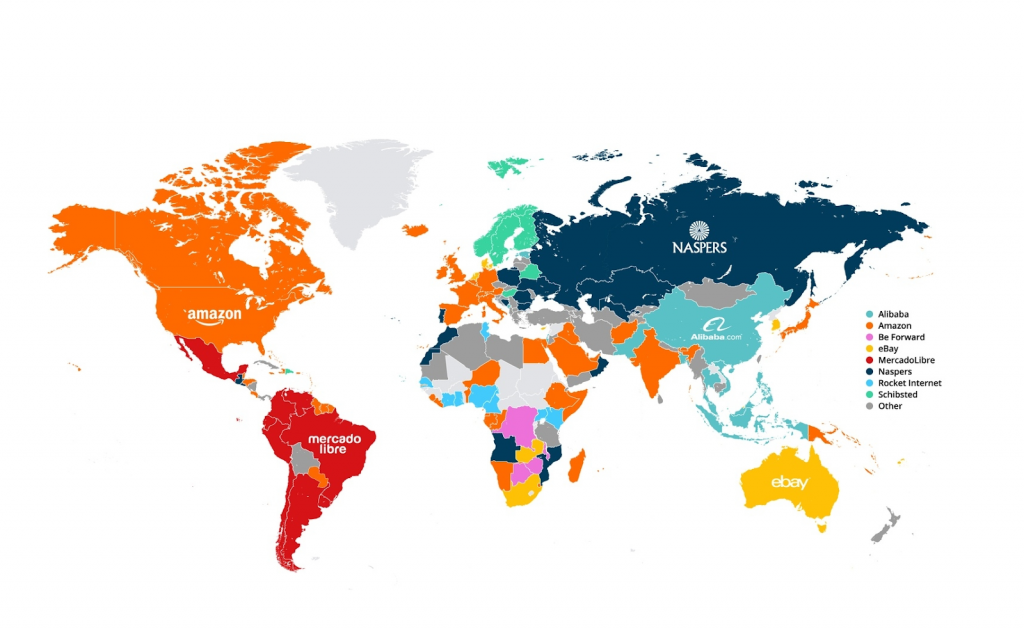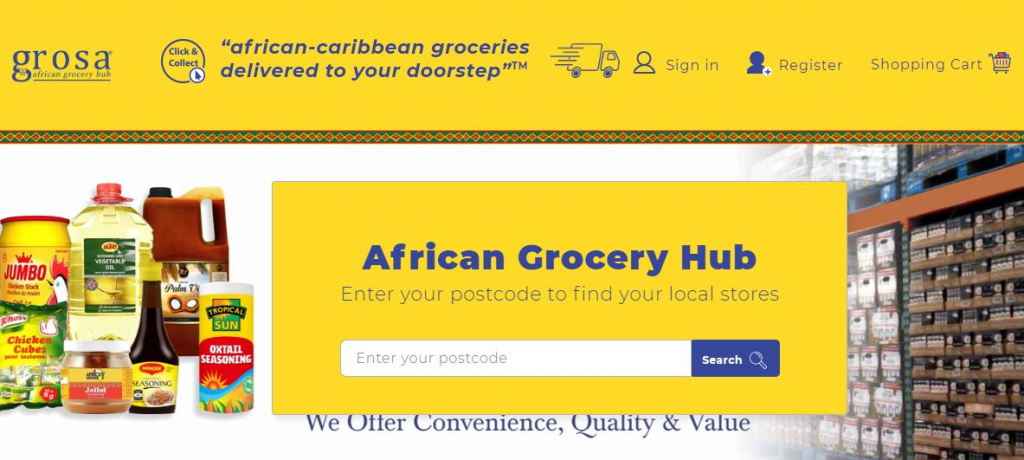Expanding your marketplace’s reach across country borders to reach a larger audience is a pretty obvious growth strategy. In 2020, just in Europe alone, 40% of e-commerce purchases were made from sellers in other countries – approximately 60% of which were done via online marketplaces. However, internationalisation of a marketplace can be a huge challenge with numerous legal, financial, technical and logistical pitfalls lying in wait.
As so often when making business decisions it’s worthwhile building a what-when-how matrix to gauge if your marketplace is ready for internationalisation. In this post we will discuss when it is the right time for cross-border expansion, which aspects of marketplace platforms should be internationalised, and how to avoid some of the pitfalls.

When should you expand your online marketplace across borders?
Expanding an online marketplace across borders is a significant step for any business, and it requires careful consideration and planning. Here are some factors to consider when deciding whether to expand your online marketplace across borders:
Market demand:
Understanding the demand for your product or service in the target market is essential before expanding your online marketplace. Conducting market research can provide valuable insights into the demographics, purchasing behaviour, and market size of the target market. For instance, if you’re an e-commerce store that sells winter wear, expanding your online marketplace to a tropical region may not be a wise decision, as the market demand for such products would be low.
Legal and regulatory compliance:
To avoid legal issues, it’s important to understand the legal and regulatory requirements of the target market, such as tax laws, consumer protection regulations, and data privacy laws. For instance, the General Data Protection Regulation (GDPR) in the European Union (EU) mandates that businesses protect the privacy of personal data of EU citizens. If you’re expanding your online marketplace to the EU, you need to ensure that you comply with GDPR to avoid legal penalties.

Infrastructure:
Assessing the infrastructure of the target market is crucial to providing your products or services. This includes logistics, payment processing, and customer support. For instance, if you’re an online marketplace that sells perishable goods, you need to ensure that the logistics infrastructure in the target market is reliable and efficient to maintain the freshness of your products.
Competition:
Evaluating the level of competition in the target market is important. Determine whether your product or service has a competitive advantage over existing businesses in the target market. For instance, if you’re expanding your online marketplace to a region where there are already established businesses offering similar products or services, you need to ensure that you have a unique selling proposition to differentiate yourself from the competition.
Cultural and language differences:
Understanding the cultural and language differences of the target market is crucial to provide a seamless customer experience. Consider hiring local staff or working with local partners to help navigate these differences. For instance, if you’re expanding your online marketplace to a region where the primary language is not English, providing language support in the local language can enhance the customer experience and help build brand loyalty.
One example of how not to do it is Groupon, the popular deal-of-the-day website that saw rapid growth in its early years. In an attempt to replicate this success, Groupon expanded aggressively into international markets without fully understanding the local culture and consumer behaviour. This led to a series of missteps, including cultural faux pas and pricing errors, ultimately resulting in significant losses for the company and a tarnished reputation in many markets.
Another example is eBay’s foray into China. Despite being a global powerhouse, eBay failed to gain a foothold in the Chinese market, largely due to its inability to adapt to local market dynamics. The company faced stiff competition from local players, such as Alibaba’s Taobao, which offered a more personalised and culturally relevant experience for Chinese consumers.

Financial resources:
Expanding your online marketplace across borders can be expensive. Ensure that you have the financial resources to invest in marketing, infrastructure, and hiring staff. For instance, if you’re expanding your online marketplace to a region where the cost of living is high, you need to ensure that you have enough funds to cover the salaries of your employees and maintain a healthy cash flow.
There are some ways marketplace owners can compensate for internationalisation expenses. One strategy is to on-charge some of the costs to sellers. Etsy, for example, charges a regulatory operating fee based on the seller’s location to offset costs such as digital services tax. Most marketplaces that operate internationally also set different country rates for payment processing fees and sales commissions.
The additional costs should however not outweigh the original selling point for sellers – that your marketplace offers an easy way to de-risk and streamline their own international expansion.
Growth strategy vs product market fit
Internationalisation, or expanding an online marketplace across borders, is often seen as a way to address a lack of product-market fit. However, in most cases, internationalisation is not a panacea for this problem, and it should be viewed as a growth strategy instead.
Aspects of marketplace platforms that should be internationalised
The number of elements that have to be attended to in order to seamlessly cross borders can be daunting. Fortunately, there are a growing number of solutions that can either automate or substantially ease implementation.
Payments
Payment systems not only need to support multiple currencies, but also have to cater for each market’s own set of regulations and preferred payment methods. For example, PayPal struggled to gain traction in China due to the dominance of local payment methods such as Alipay and WeChat Pay. On the other hand, Uber has successfully adapted to local payment methods such as cash payments in India and QR code payments in China.
Arguably the best-in-class solution for global marketplaces is Stripe Connect. It’s an end-to-end payment service provider that takes care of all the aspects of international payments, from invoicing to seller payouts. No wonder major players like Amazon, Uber, Deliveroo, Lyft, and Zillow have all used it.

Site content in multiple languages
Once your marketplace crosses linguistic borders landing pages, product descriptions, seller profiles, user dashboards, error and success messages, and email templates must be offered in multiple languages. In some instances auto translation, a cheaper option, may do the trick, but sometimes only a dedicated website for each country will do. Hopefully the rise of AI translation tools will make the former more effective.
User generated content in multiple languages
For our client MobyPark we added a Google Translate button so that users can translate listings into their preferred language. This works similar to the ‘see translation’ links found on platforms like Facebook. Another client allows sellers to upload manual translations of product descriptions in similar fashion to Etsy.
Shipping
Shipping costs can vary massively between different countries, while international shipping operators may not be as cheap as local operators. This was the challenge facing art marketplace, Affordable Art Fair.
Our solution was to offer sellers flexible options. They could either use the default shipping costs returned by the UPS API, with an optional markup, or they could use local shipping services. This helped sellers to cater for different buyer locations and offer extra value such as bespoke packaging.

User experience
This involves adapting the interface, design, and user flow to suit the local market. For example, Chinese e-commerce giant Alibaba’s platforms have a vastly different user interface compared to Amazon or eBay, with a focus on social interaction and gamification.
Unique UX elements such as additional address fields (e.g. zip codes in the US) and alternative navigation options for languages like Arabic are important to keep in mind.
A sound returns mechanism is crucial for building trust with customers and improving the overall customer experience on an online marketplace. It can be a headache for international marketplaces to ensure consistent, hassle-free returns within a reasonable timeframe.A recent solution is ZigZag, a global SaaS platform that helps online retailers to manage their returns.
Marketplaces can reduce buyer friction by allowing users to set their currency (via embedded currency converters) and language preferences, with defaults based on their IP addresses

Customer service
Despite operating across time zones, marketplace owners should ensure that sellers respond to customer queries promptly. Our client, Fanpass, implemented a successful carrot-and-stick strategy by incentivising or penalising good and bad seller service respectively.
User roles
Sometimes various functionalities of user roles need to be internationalised to ensure the optimal running of a marketplace platform.
Data segregation. Nestify operates in multiple countries and wants their employees to only have access to the data of the country they work in.
Work allocation. Affordable Art Fair wanted sellers to be automatically assigned to different onboarding teams based on their location.
Sales tracking. We built a sales tracking feature that includes multi-currency updates every 30 minutes for the site administrators of event ticket marketplace, Fanpass. It made it much easier to check sales numbers every day.
Customs rules & regulations
Adhering to customs rules and regulations is crucial for any online marketplace that wants to expand internationally. Failure to comply with them can result in significant penalties and delays. They include:
Tariffs and Taxes: Platforms and sellers should be able to set different tax rates (e.g. VAT) for countries, states (e.g. US) and product types (e.g. VAT exempt items). In addition, if an online marketplace wants to sell goods to customers in the European Union, they need to comply with the EU’s Value-Added Tax (VAT) rules, which require sellers to register for VAT in each EU country where they sell goods and charge the appropriate VAT rate. This onerous obligation can be circumvented by using payment service providers like Stripe.
Customs Declarations: When goods are imported or exported, customs declarations need to be filed with the relevant authorities. These declarations provide information on the goods being shipped, including their value, origin, and destination. Integrating an international shipping service like UPS can automate this function.
Prohibited and Restricted Items: Customs rules and regulations also dictate what items can and cannot be imported or exported. These restrictions can vary from country to country, and failure to comply with them can result in fines or even legal action. For example, if an online marketplace wants to sell goods to customers in Australia, they need to be aware of the country’s strict rules on the importation of certain items, such as weapons, drugs, and certain food products. Failure to comply with these rules can result in significant penalties or even criminal charges.
Pricing strategy
When expanding into new markets, it’s important to consider factors such as local purchasing power, currency exchange rates, and local competition when setting prices. A well-designed pricing strategy can help attract customers, increase sales, and maximise profits in different markets.
Amazon is well-known for offering lower prices in markets where it faces strong competition from local players, while charging higher prices in markets where it has a dominant position1.
Localisation
Product descriptions, product categories, and even the buying experience often need to be adjusted for different countries. This includes adjusting the user interface, product selection, and marketing messages to align with the local culture and customs. For example, in some countries, displaying certain colours or images can be considered offensive, so online marketplaces need to be mindful of these nuances.
Marketplaces with an international presence should localise product catalogues for each target country, adapting to measurements and product types. For example, Airbnb’s offering varies significantly across different markets, with unique features such as “Hanok” homes in South Korea and “Ryokans” in Japan.
The ideal keywords for product listings can vary even among English-speaking countries. Buying “thongs” in Australia means something completely different in the United Kingdom where they are known as “flip-flops”.
Localisation vs internationalisation
Last, but not least, it is crucial to determine if your sellers are capable of selling crossborder and how much assistance they require. In some instances it may be better to focus on local sellers rather than international expansion.
Hyper-local marketplaces often have an advantage over global marketplaces like Amazon, since they cater better for regional needs. Our client, Grosa, a marketplace for afro-caribbean groceries in the greater London area, is one such example.

